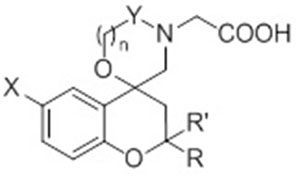
Wagner K, Byrne R, Zanoni M, Gambhir S, Dennany L, Breukers R, Higgins M, Wagner P, Diamond D, Wallace GG, Officer DL (2011) A multiswitchable poly(terthiophene) bearing a spiropyran functionality: understanding photo- and electrochemical control. Wagner K, Zanoni M, Elliott ABS, Wagner P, Byrne R, Florea LE, Diamond D, Gordon KC, Wallace GG, Officer DL (2013) A merocyanine-based conductive polymer. Minkin VI (2004) Photo-, thermo-, solvato-, and electrochromic spiroheterocyclic compounds. Sens Actuator B Chem 175:92–99įlorea L, Scarmagnani S, Benito-Lopez F, Diamond D (2014) Self-assembled solvato-morphologically controlled photochromic crystals. Lab Chip 10:195–201įlorea L, Hennart A, Diamond D, Benito-Lopez F (2012) Synthesis and characterisation of spiropyran-polymer brushes in micro-capillaries: towards an integrated optical sensor for continuous flow analysis. Sens Actuator A Phys 140:176–184īenito-Lopez F, Byrne R, Raduta AM, Vrana NE, McGuinness G, Diamond D (2010) Ionogel-based light-actuated valves for controlling liquid flow in micro-fluidic manifolds. Sugiura S, Sumaru K, Ohi K, Hiroki K, Takagi T, Kanamori T (2007) Photoresponsive polymer gel microvalves controlled by local light irradiation.

Satarkar NS, Zhang W, Eitel RE, Hilt JZ (2009) Magnetic hydrogel nanocomposites as remote controlled microfluidic valves. Prog Polym Sci 17:163–249īeebe DJ, Moore JS, Bauer JM, Yu Q, Liu RH, Devadoss C, Jo B-H (2000) Functional hydrogel structures for autonomous flow control inside microfluidic channels. Schild HG (1992) Poly (n-isopropylacrylamide)-experiment, theory and application. Ziółkowski B, Czugala M, Diamond D (2013) Integrating stimulus responsive materials and microfluidics: the key to next-generation chemical sensors. Polym Chem 2:1234–1248īyrne R, Benito-Lopez F, Diamond D (2010) Materials science and the sensor revolution. Pasparakis G, Vamvakaki M (2011) Multiresponsive polymers: nano-sized assemblies, stimuli-sensitive gels and smart surfaces. S-k Ahn, Kasi RM, Kim S-C, Sharma N, Zhou Y (2008) Stimuli-responsive polymer gels. J Control Release 190:254–273ĭe las Heras Alarcon C, Pennadam S, Alexander C (2005) Stimuli responsive polymers for biomedical applications. Mater Sci Technol 30:1515–1516īuwalda SJ, Boere KWM, Dijkstra PJ, Feijen J, Vermonden T, Hennink WE (2014) Hydrogels in a historical perspective: from simple networks to smart materials. J Cell Physiol 203:465–470īarber ZH, Clyne TW, Sittner P (2014) Smart materials.

Rosso F, Marino G, Giordano A, Barbarisi M, Parmeggiani D, Barbarisi A (2005) Smart materials as scaffolds for tissue engineering. Yoshida R (2010) Self-oscillating gels driven by the Belousov-Zhabotinsky reaction as novel smart materials. Lastly, the presented photoresponsive porous gels exhibit an order of magnitude faster reswelling rate compared to the non-PEG-produced control sample. Moreover, the mechanical stability of the gels is confirmed with rheometry. Scanning electron microscopy reveals the PEG-induced pores to be in the range of 0.1–2 μm. Most significant improvement was observed in the reswelling step and is demonstrated with optical microscopy combined with kinetic ultraviolet–visible spectroscopy (UV–Vis) analysis. This impacts the diffusion of water molecules moving in/out of the hydrogel matrix, thus improving the swelling and shrinking kinetics of the hydrogel due to reduction of the average diffusion pathlength. Upon removal of the PEG porophore post polymerisation, hydrogels of different pore sizes were obtained.

For this purpose, polyethylene glycol (PEG) of two molecular weights (200 g mol −1) has been used as the porophore in the polymerisation mixture. The improvement is realised by introducing pores into the material. This study focuses on improving the speed of actuation of poly( N-isopropylacrylamide)-based photoresponsive gels containing copolymerised spiropyran as the photoswitch and acrylic acid as the proton source.


 0 kommentar(er)
0 kommentar(er)
